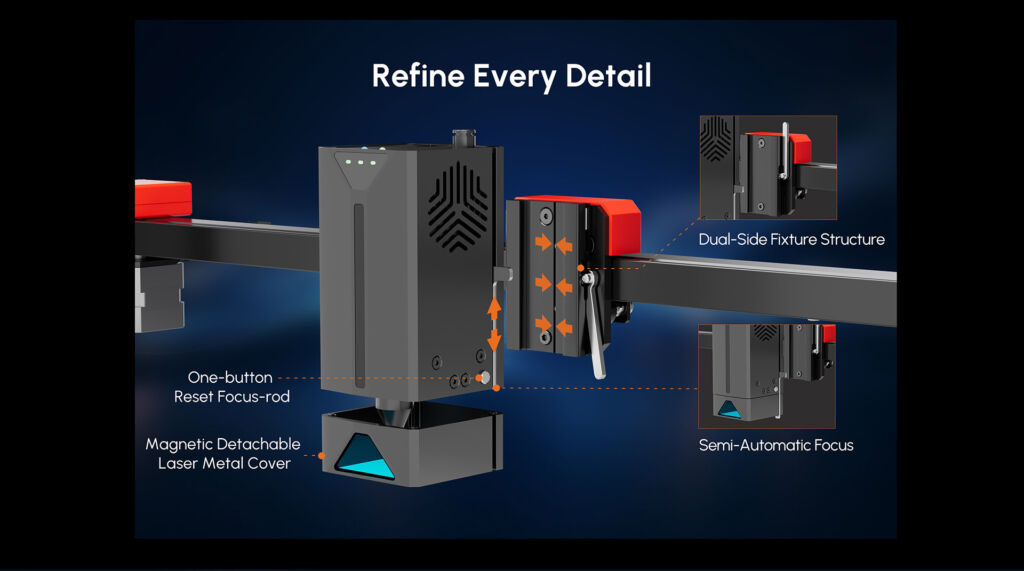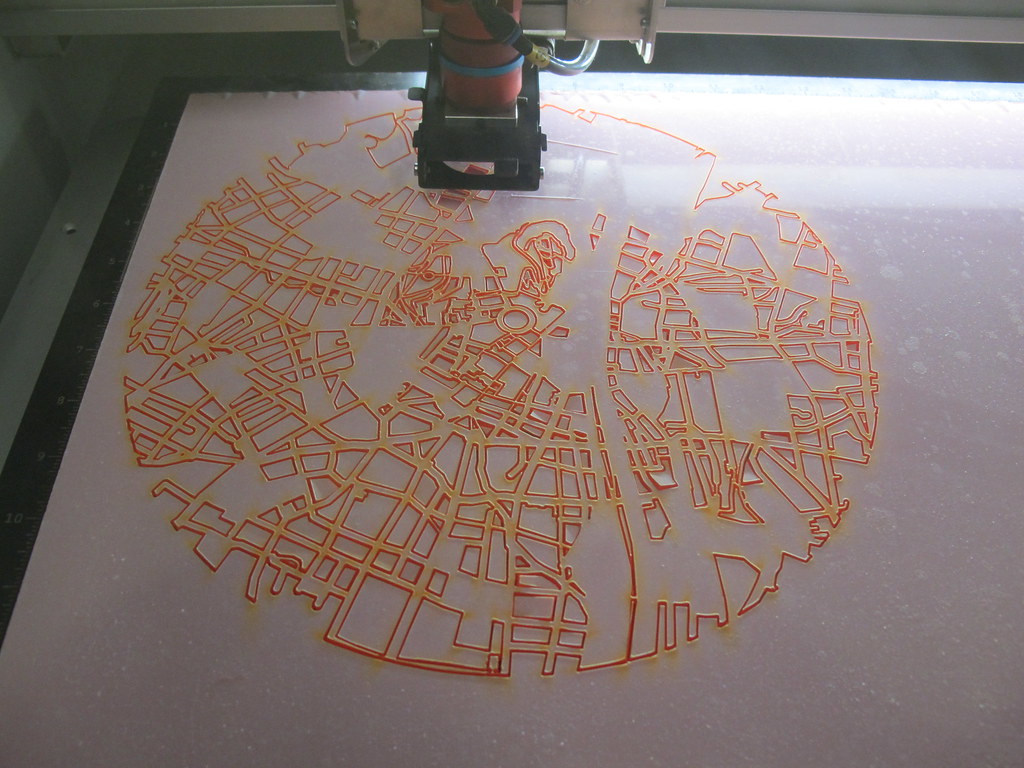https://www.findlight.net/blog/machine-network-connecting-multiple-laser-cutters/Laser Cutting Technology has been a prominent method of material processing since the 1990s, providing extreme precision and speed for a variety of projects. The laser cutting technology has become exceptionally fine-tuned in recent decades, and laser cutters have become much more reasonable in price. Smaller machines, typically used for personal projects, have a price range of around $2,000 to $10,000. The more expensive machines are often associated with more powerful lasers, as a higher wattage will prove more pricey than an entry-level unit. Not only does Laser Cutting save immense time in the long haul, but it offers what seems to be the best efficiency and results currently on the market. In this blog post, we will further discuss 6 advantages of Laser Cutters.
Summary of Key Advantages of Laser Cutters
- High Material Compatibility
- Ability to Cut Complex Shapes
- Extreme Precision
- Energy Efficiency
- Repeatability
- Automation

Precision in Motion: The Intricacies of a Laser Cutting Machine. As seen on FindLight Marketplace.
1. High Material Compatibility
Laser Cutters are able to cut a wide variety of materials. The list below categorizes many–but not all– of the machine’s compatible mediums.
- Wood: plywood and MDF (medium-density fiberboard) are commonly used. Users are advised to stray from using woods already coated with oil or resin as they can easily catch fire.
- Paper/Cardboard: nearly any thickness of these materials can be cut.
- POM (Polyoxymethylene): highly utilized plastic typically cut for precision parts because of its excellent dimensional stability.
- Plastic: Acrylic, PMMA (Poly-methyl-methacrylate, engineering plastic), and Lucite are commonly cut.
- Glass: is probably the most difficult to cut due to its reflective qualities, but results in success with an experienced machine operator.
- Metals: mild steel, stainless steel, and some non-ferrous metals (aluminum, copper, lead, nickel, tin, titanium, zinc, copper alloys, etc.) can be used. Non-ferrous metals, like aluminum, can oftentimes prove more difficult to cut due to reflective qualities.
Of course, the ability to cut a select few of these materials, as well as their allowed thickness, depends on the power of the machine. Different machines will offer more powerful lasers, and different levels of operating expertise will provide different laser-cutting services. The images below showcase a few of these materials (wood, metal, and paper left to right) being cut.


2. Ability to Cut Complex Shapes
As you can see from the photos above displaying compatible materials, laser cutters are capable of cutting extremely complex shapes with unbelievable precision. There is little you cannot cut with these machines, with the only exception being designs on a minuscule scale that are too small for the focal spot size of the laser.
A complex cut can mean many things, whether that be for an important engineering part or a personal artistic project. The example below shows a complex cut, with extremely small, curved, and detailed segments.

Ability to cut complex shapes is one of the key advantages of laser cutters. The shown above photo is a laser-cut paper craft; notice the detail and precision in the minuscule cuts.
As you can see, the orientation of these cuts is complex as well, with all of them strategically fit to a singular sheet of material. These pieces are then used to construct the spherical craft shown. This example aligns with a personal art project. Complex cuts for engineering parts can include pieces in fields involving electrical circuits, medical devices, and aerospace systems.
3. Precision: One of the Key Advantages of Laser Cutters
Accuracy is arguably one of the main motivators for using laser cutters in the first place, as this is oftentimes their most well-known advantage. Most machines are accurate to +/– 0.1 mm, and with high standards like these, there is little need for after-treatment or fixes to the finished products. The use of lasers is typically associated with increased accuracy in any machine. Lasers make it feasible to remove the absolute minimum amount of a material to produce the desired cut, so less material is wasted. This brings us to the next key advantage focused on preserving both materials and energy, efficiency.
4. Energy Efficiency
Energy Efficiency is all about achieving perfect results while using as little energy as possible. It should be the main focus of any business, as it is the most cost-effective way to save money, reduce environmentally toxic emissions, and meet energy demands. Laser cutters are acclaimed for their energy efficiency, which makes these machines the perfect candidate for environmentally conscious projects. They reduce various costs involved in manufacturing and consequently increase total revenue. Using a laser cutter reduces overall energy use, making them a better alternative for businesses looking to maintain a smaller environmental footprint on the planet.
How do they stay energy efficient? A lot of it has to do with the machine’s laser specifications, you can read more about it here.
5. Repeatability
The precision of laser cutters leads us to another similar advantage, repeatability. A standard machine is exact to +/– 0.05mm on most materials. This ensures that each part, project, or product cut on the machine is identical to maximal levels of precision. Repeatability is essential in almost any manufacturing process, identical parts are needed in many scenarios to please customers or even ensure safety. Meaning, all parts made for engineering assemblies – for example – must be made identical to ensure machinery works properly. The advantage of repeatability makes Laser Cutters extremely reliable, and therefore desirable in various industries.
6. Automation
Although an experienced machine operator plays a large part in the resulting quality of a piece, the majority of the laser process is completely automated. The machines need very little manpower because of their highly advanced technology. So all the workers must do is move materials. In the long run, a reduced number of employees will save businesses money. The machine does most of the work for you, so a laser-cutting machine is the ideal financial investment.
Not only is automation a good advantage financially, but it’s also a benefit for overall usability and safety. Hands-free cutting is the perfect method to prevent workplace mishaps, so it is also an excellent investment for employee welfare.
Summing up the Advantages of Laser Cutters
Laser Cutters are handy machines in a variety of industries. This allows companies to make quick and clean mock-ups of prototypes, or critically detailed engineering parts. As you can see from the benefits described above, They are tools oftentimes used to bring solely digital designs to the physical world, and they will continue to do so as their technology advances.
Interested in purchasing a Laser Cutter? You can start your comparison shopping here at the FindLight website. Browse the machines from various suppliers posted on FindLight and determine which one meets your personal needs!
If you enjoyed this article on the 6 advantages of laser cutters, please subscribe and share. If you have additional insight into Laser Cutters or their notable benefits, share your thoughts in the comments below.


It’s great that you pointed out how laser cutting would not only save immense time in the long haul, but it offers what seems to be the best efficiency and results currently on the market. I was watching an educational show last night and I saw how the laser cutting process was performed. According to what I’ve seen from the show, it seems there are also workshops now that offer metal laser cutting services.
Great read! The benefits of laser cutters are compelling. I’m especially curious to learn more about the specific laser cutting machines featured – can you share more details?
Thanks for your interest! We’re glad you enjoyed the article. If you’re curious about specific laser cutting machines, we’d be happy to help. Are you looking for recommendations based on material type, application, or budget? Let us know, and we can point you to some options available on FindLight.